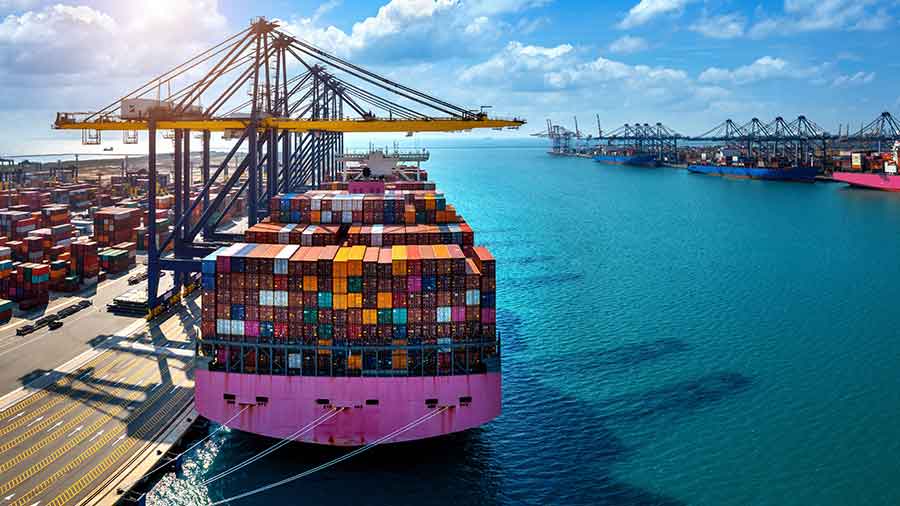Vietnam Accounting Standards (VAS) are the regulations designed specifically for businesses operating within Vietnam. Developed by the Ministry of Finance, VAS aligns with the local economic and regulatory environment. These standards are largely rule-based, providing detailed guidelines on various accounting treatments.
On the other hand, IFRS Accounting Standards are developed by the International Accounting Standards Board (IASB). The IASB is an independent standard-setting body within the IFRS Foundation.
The IASB is supported by technical staff and a range of advisory bodies. IFRS focuses on a principles-based approach, offering more flexibility and aiming for high transparency and comparability across international borders. This global perspective helps multinational corporations and international investors by standardizing financial reporting, making it easier to assess and compare financial health and performance across different markets.
This article will explore how these differences between these two standards impact businesses, particularly those transitioning from VAS to IFRS.
Historical context and evolution of VAS and IFRS
The Vietnam Accounting Standards (VAS) were developed to align with the country's unique economic conditions and regulatory environment. Initially, VAS was based on earlier versions of the International Accounting Standards (IAS), adapted to meet the specific needs of Vietnam's economy.
The Ministry of Finance in Vietnam played a pivotal role in formulating these standards, ensuring that they catered to the local business practices and financial reporting requirements. Over time, VAS has undergone several revisions to incorporate best practices and address emerging financial reporting challenges within the domestic market.
Adopting IFRS will encourage better corporate governance and risk management practices, aligning Vietnamese companies with global standards. This transition, however, presents challenges such as the need for extensive training for accounting professionals and the overhaul of existing financial reporting systems. Despite these challenges, the strategic benefits of adopting IFRS, including improved investor confidence and greater competitiveness in the global market, make it a crucial step for Vietnam's economic growth and integration.
Comparison analysis of VAS and IFRS
The transition from VAS to IFRS represents a shift from a rules-based to a principles-based approach, enhancing the comparability, transparency, and relevance of financial statements. While VAS offers simplicity and stability, IFRS provides a more accurate and comprehensive representation of an entity’s financial performance and position. Understanding these differences is crucial for entities operating in Vietnam and considering international reporting standards.
The following table highlights the main aspects where these accounting standards diverge:
|
Aspect |
VAS (Vietnamese Accounting Standards) |
IFRS (International Financial Reporting Standards) |
|
Principles-Based vs. Rules-Based Approach |
Rules-based: Applies specific rules for evaluating and handling accounting issues, leading to rigidity. |
Principles-based: Provides a flexible framework focusing on fundamental principles for financial reporting, allowing for adaptable evaluation and treatment. |
|
Presentation of Financial Statements |
Standardized forms: Companies reporting under VAS are also required to apply the VAS chart of accounts and standard financial statements format, prescribed by Circular 200 issued by the MoF in 2014, which are descriptive and inflexible.
Financial statements are based on the standard VAS financial statement format.
|
Flexible format: No mandatory forms, allowing companies to design financial statements to suit their business characteristics and needs. |
|
Reporting currency |
Vietnamese Dong (VND): Requires the use of VND as the official reporting currency to the body authorities, with conversions disclosed in the notes. |
Various currencies: Allows various reporting currencies, with conversions and exchange rates disclosed. |
|
Minimum value threshold of fixed assets |
VND 30,000,000: Fixed assets must meet the minimum value mentioned above. |
No specific guidelines: There are no specific guidelines for minimum value threshold of fixed assets. |
|
Measurement after initial recognition of PPE |
Two accounting models: cost model and revaluation model. |
Only allows cost models |
|
Asset impairment |
No specific guidelines: Does not provide explicit requirements for recognizing asset impairment, mainly applying the historical cost principle. |
Impairment recognition: Recognizes impairment when the fair value is lower than the carrying amount, adjusting the carrying amount accordingly. |
|
Revenue Recognition and Financial Reporting |
Flexibility: Allows revenue recognition when risks and rewards are transferred, which can vary timing and result in less comparability. |
Stringent requirements: Follows IFRS 15, which requires a detailed five-step process for recognizing revenue based on the transfer of control, ensuring consistency and comparability. |
|
Classification of lease |
Operating leases and finance leases: For operating leases, the lessee only records the periodic rental as an expense incurred during the period. For finance leases, the lessee will record the financial lease assets and liabilities. The lessee will then allocate the financial lease assets and liabilities to the following period's reports. |
No longer distinguish between operating leases and financial leases: A right-of-use asset and lease liability will be recorded in the financial statements except for special cases. |
|
Financial instruments |
Historical cost method: Primarily records financial instruments at their original purchase price, providing simplicity and stability but potentially outdated valuations. |
Fair value approach: Measures financial instruments at fair value, reflecting current market conditions and enabling better comparability across companies. |
|
Consolidation and Investment Reporting |
Simplified approach: Mandates consolidation with some exemptions; investments are often treated using a cost-based approach. |
Comprehensive consolidation: Requires parent companies to present consolidated financial statements, emphasizing control for consolidation, with investments in associates and joint ventures accounted for using the equity method. |
|
Cash Flow and Taxation |
Less detailed reporting: Cash flow statements are less detailed, with limited guidance on derivatives and changes in liabilities; bank overdrafts treated as bank loans. |
Detailed cash flow reporting: IAS 7 requires comprehensive disclosure of cash flows, including changes in financing activities and clear classification of operational, investing, and financing activities. |
|
Recognition and Measurement of Assets and Liabilities |
Historical cost: Primarily uses historical cost, reflecting simplicity and safety but not current market value. |
Fair value: Emphasizes fair value for more accurate and reliable asset and liability valuation, guided by standards like IAS 16, IAS 38, and IFRS 9. |
|
Capitalization of borrowing costs |
Long-term assets: The capitalization of borrowing costs for only long-term assets is allowed |
No specific guidelines: The qualifying assets for capitalization necessarily take a substantial period of time to get ready for their intended use or sale, but there are no specific guidelines for this period. |
Convergence efforts and future outlook
The Vietnamese government has set a strategic plan to adopt International Financial Reporting Standards (IFRS) by 2025, marking a significant shift from Vietnamese Accounting Standards (VAS). This transition is part of an effort to enhance the comparability and transparency of corporate financial statements, aligning Vietnam with international best practices and improving corporate governance.
The IFRS adoption plan, outlined in a draft roadmap published in 2019, is divided into two main phases:
Phase I: Voluntary Application (2022-2025)
During this period, entities with sufficient resources and a demand for IFRS will begin applying the standards voluntarily. These entities include parent companies that are state-owned enterprises, listed companies, large public entities, and 100 percent foreign-invested companies pre-approved by the Ministry of Finance (MoF). This phase allows these organizations to prepare consolidated financial statements in accordance with IFRS, serving as a preparatory stage for broader adoption.
Phase II: Compulsory Application (Post-2025)
Following the voluntary period, the adoption of IFRS will become mandatory for certain enterprises. This phase will require compulsory consolidated financial statements and may extend to compulsory or voluntary separate financial statements, depending on the specific regulations set forth by the MoF. Additionally, enterprises not subject to full IFRS adoption will need to comply with the Vietnamese Financial Reporting Standards (VFRS), which are designed to align closely with IFRS principles.
Challenges in transitioning from VAS to IFRS
Transitioning from VAS to IFRS presents several challenges, particularly in terms of technical and operational adjustments:
Technical adjustments:
- Companies will need to invest in extensive training for their accounting and finance teams to understand and apply IFRS. This requires a deep understanding of the principles-based approach of IFRS, which is more complex and judgment-based compared to the rules-based VAS.
- Existing accounting systems and software may need significant upgrades or replacements to handle the new reporting requirements under IFRS. This includes ensuring that the systems can accurately capture and report fair value measurements and other IFRS-specific disclosures.
Operational adjustments:
- The shift to IFRS will necessitate a comprehensive overhaul of internal processes and controls to ensure compliance. This includes updating policies, procedures, and documentation practices.
- Companies will need to navigate regulatory changes and ensure that their financial statements meet the new IFRS requirements while also complying with local laws and regulations.
Benefits and strategic importance
Despite the challenges, aligning VAS with global accounting standards such as IFRS offers significant benefits and strategic advantages:
- Adopting IFRS will improve the transparency of financial reporting, making it easier for stakeholders to understand and compare financial statements across different entities and jurisdictions. This can enhance investor confidence and attract foreign investment.
- For multinational companies operating in Vietnam, the transition to IFRS will streamline their financial reporting processes, enabling seamless integration with their global operations. This alignment can reduce the complexity of preparing consolidated financial statements and enhance the consistency of financial information.
- By adopting international best practices in financial reporting, Vietnamese companies can strengthen their corporate governance frameworks. IFRS provides a robust framework for financial reporting, which can help companies implement better internal controls and risk management practices.
- Enhanced financial transparency and comparability can improve access to global capital markets. Investors and creditors often prefer financial statements prepared under IFRS, as it provides them with more reliable and comprehensive information to make informed decisions.





















